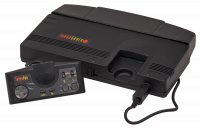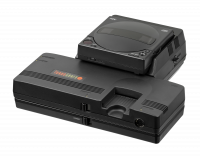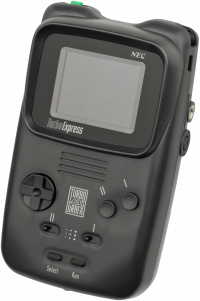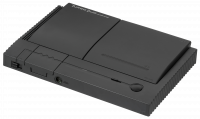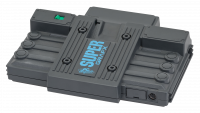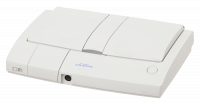TG16:TurboGrafx-16 Mods Wiki: Difference between revisions
No edit summary |
mNo edit summary |
||
| (7 intermediate revisions by the same user not shown) | |||
| Line 35: | Line 35: | ||
===Technical Information=== | ===Technical Information=== | ||
* [[Media:TurboGrafx-16-Service-Manual.pdf|TurboGrafx-16 Service Manual]] | * [[Media:TurboGrafx-16-Service-Manual.pdf|TurboGrafx-16 Service Manual]] | ||
* [[Media:Pc_engine_schematics.pdf|PC Engine Schematics]] | |||
* [[Media:Pc_engine_duo_schematics.pdf|PC Engine Duo Schematics]] | |||
* [[TG16:TurboGrafx-16 Model Differences|Model Differences]] | * [[TG16:TurboGrafx-16 Model Differences|Model Differences]] | ||
* <s> [[TG16:Video Output Notes]] </s> | * <s> [[TG16:Video Output Notes]] </s> | ||
| Line 48: | Line 50: | ||
* <s> [[TG16:Region Switch Mod]] </s> | * <s> [[TG16:Region Switch Mod]] </s> | ||
* <s> [[TG16:PC Henshin Turbo Card]] </s> | * <s> [[TG16:PC Henshin Turbo Card]] </s> | ||
* [[TG16:In-Game Reset (IGR)]] | * [[TG16:In-Game Reset (IGR)]] | ||
* [[TG16:Ghosting Fix (TurboDuo)]] | * [[TG16:Ghosting Fix (TurboDuo)]] | ||
| Line 65: | Line 66: | ||
* Internal RGB Mods: | * Internal RGB Mods: | ||
** [https://github.com/zaxour/TurboNanza TurboNanza (RGB)] | ** [https://github.com/zaxour/TurboNanza TurboNanza (RGB)] | ||
** | ** [https://voultar.com/index.php?route=product/product&path=59&product_id=53 Voultar's RGB Kit (RGB)] | ||
** | ** [https://etim.net.au/av-driver/ eTim's AV Driver (RGB)] | ||
** | ** [https://gamesx.com/rgbadd/rgbturbo.htm GameSX's RGB Mod (RGB)] | ||
* [[TG16:External RGB Mods]] | * [[TG16:External RGB Mods]] | ||
* <s> [[TG16:YPbPr Component Mod]]</s> | * <s> [[TG16:YPbPr Component Mod]]</s> | ||
| Line 104: | Line 105: | ||
| <h3>Flash Carts</h3> | | <h3>Flash Carts</h3> | ||
<ul> | <ul> | ||
<li> [https://krikzz.com/our-products/cartridges/turbo-everdrive-pro.html Turbo EverDrive Pro] | <li> [https://krikzz.com/our-products/cartridges/turbo-everdrive-pro.html Turbo EverDrive Pro] </li> | ||
<ul><li> [https://ko-fi.com/s/6902c3b100 Duo Disabler] </li> | |||
<li> <s> [[TG16:Turbo EverDrive Pro Stereo Mod|Stereo Mod]] </s> </li></ul> | |||
<li> [[TG16:Turbo EverDrive]] (and [[TG16:TEOS]]) </li> | |||
<li> [[TG16:Super SD System 3]] (discontinued)</li> | <li> [[TG16:Super SD System 3]] (discontinued)</li> | ||
<li> [[TG16:Super HD System3 Pro]] </li> | <li> [[TG16:Super HD System3 Pro]] </li> | ||
<li> [[ | <li> [[:File:DIY_Flash_HuCard.zip|DIY Flash HuCard]] </li> | ||
</ul> | </ul> | ||
||<h3>3D Printables</h3> | ||<h3>3D Printables</h3> | ||
Latest revision as of 23:27, 9 November 2024


The PC Engine/TurboGrafx-16 is an 8-bit console from the fourth generation of video game consoles. Designed by Hudson Soft and manufactured and sold by electronics giant NEC, the console was initially released in Japan as the PC Engine on October 30th, 1987 and was released in North America (August 29th, 1989) as the TurboGrafx-16, followed by a limited European release as the TurboGrafx in 1990. The console used small credit card-sized cartridges known as HuCards and was also the first console to play games on optical media via a CD-ROM expansion, first released in 1988. It was also the first console to have a handheld variant — the TurboExpress — which could play the same games as the home consoles. At least 17 different model variations were released, with the most significant models being part of the TurboDuo (or PC Engine Duo) line which incorporates the CD-ROM² add-on directly into the hardware. Although it was a success in Japan, the console saw sluggish sales in North America and was discontinued there by 1993. NEC and Hudson would unsuccessfully follow up on the PC Engine with the 32-bit PC-FX in 1994, but the PC Engine continued to see releases in Japan until 1999.
Flash Carts |
3D Printables |
Replacement Parts |
Other |
